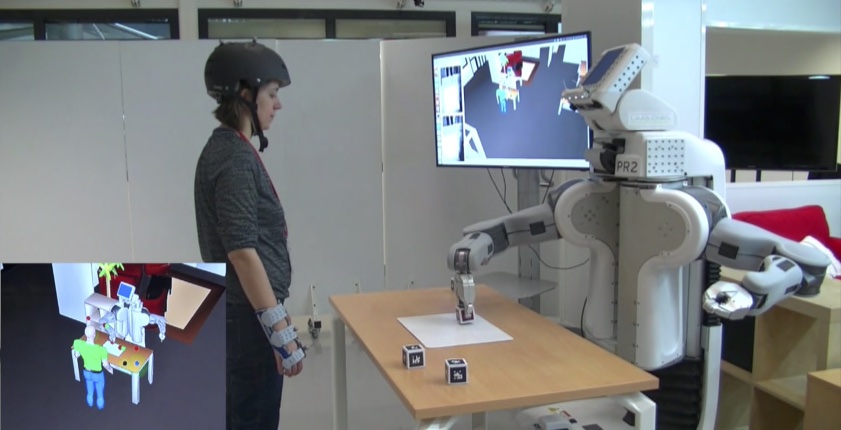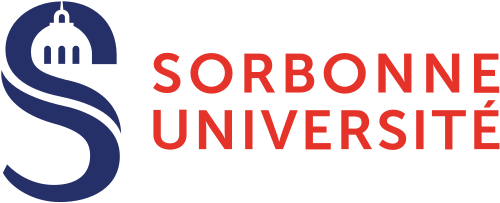Project ELSA – Effective learning of social affordances for human-robot interaction
The concept of affordances is the ability of an object or an environment to evoke its use or function. It is gradually attracting the attention of robotics and artificial intelligence (AI) researchers as a way to provide artificial agents with more autonomy, by allowing them to learn for themselves which commands sent to their motors produce effects on the environment.
Nevertheless, social affordances remain largely unexplored in robotics and AI. While physical affordances represent a step towards autonomous agents that better understand their physical environment, social affordances are necessary to move towards more realistic multi-agent environments. Moreover, we know that humans accquire social affordances while learning how to interact with others. Enabling robots to do so could permit them to better interact with humans.
ELSA – Effective Learning of Social Affordances for Human-Robot Interaction – is a Franco-Austrian research project that aims at studying the learning of social affordances in robots. The project aims at providing robots with the ability to learn social affordances for natural and efficient interaction with humans. The project is funded for 4 years, starting in January 2022, by the ANR on the French side and by the FWF agency on the Austrian side.
The project consortium is composed of four research institutes, two in France and two in Austria. On the French side, ISIR is involved with Mehdi Khamassi, Research Director, who coordinates the project, and Benoît Girard, Research Director, leader of the second work package of the project (WP2). The LAAS-CNRS, Laboratory of Analysis and Architecture of Systems, is also a French partner. On the Austrian side, the University of Innsbruck is a partner via the Department of Computer Science (IFI) and the Digital Science Center (DiSC).
Description of the ELSA project by Mehdi Khamassi, project coordinator.
What does the project involve?
It is about studying the learning of social affordances in robots. Affordances are opportunities for actions perceived by an agent when interacting with its environment. They are of interest to roboticists to describe the potential interactions of the robot with objects beyond simple physical properties.
In the ELSA project, we extend the notion to social affordances, which have so far barely been studied in robotics. Here, we make the following hypothesis:
- that robots can learn social affordances in the same way as they learn affordances in non-social situations;
- that robots, while learning to autonomously recognize social affordances offered by their human partners, will be able to respond more efficiently and appropriately to humans. This would facilitate coordination and cooperation between humans and robots.
What is the objective of the project?
The central objective of the project is to study the conditions that allow a robot to efficiently learn social affordances, in order to facilitate communication and cooperation with humans. In particular, we will study problems related to social affordances in robotics, organized in 4 work packages:
- Theory and practice of social affordances;
- Social affordances in decision making;
- Social affordances for action execution;
- Architecture, scenario, integration.
The work package concerning “social affordances in decision making”, led by ISIR, aims at proposing algorithmic solutions to allow robots to learn different types of social affordances. The objective is to allow robots to learn an internal model of human agent skills, so that the robot can progressively distinguish between human-general and human-specific social affordances. For instance, nearly all humans would respond to a salutation with the hand by handwaving. However, some gestures induce different responses in different people.

What are the possible applications?
The main application framework of this work is human-robot interaction, and more precisely human-robot cooperation. A better understanding of how robots can learn to recognize and express social affordances would help designing more cooperative robots with humans. This would then allow to assist humans in a variety of tasks, such as object manipulation or navigation. The project will also contribute to other spin-offs, notably in terms of fundamental knowledge on how humans learn, perceive and express social affordances. Developing algorithms that allow a robot to learn social affordances is a way to propose models of how humans do this learning.
Overall, the project addresses a critical lack of basic knowledge about how social affordances are learned and used in the context of human-robot interaction. The major strength of the project is that it addresses a relatively unexplored subfield (social affordances in robotics) that builds on well-studied areas (non-social affordances in robotics but also in psychology). In the continuity of the previous works of the consortium, the project is highly interdisciplinary and involves complementary expertise. One of the work packages will set up new social affordance learning experiments in humans. Of the originalities is that these experiments have been designed from questions and hypotheses enriched with robotics discussions. We thus aim to shed a new light on these questions in order to also contribute to experimental psychology research.
This project relies on various scientific expertises of the ISIR. First, the expertise of the AMAC team on learning in robotics. Secondly, the expertise of several ISIR teams (including PIRoS and AMAC) on learning in social interaction situations, what Mohamed Chetouani, researcher at ISIR and Professor at Sorbonne University, calls “interactive learning”. Finally, the project is rooted in the study of human cognition and in the design of experimental psychology protocols, to measure in a precise, rigorous and repeatable way human and robot behaviors.
Contact for the project: Mehdi Khamassi, CNRS Research Director



